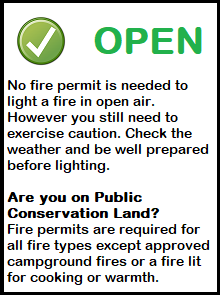Fire Safety Advice – Caravans and Sleepouts
More and more New Zealanders are using caravans and sleepouts as extra sleeping and living areas. The fire danger in these is much higher than in a home.
The following tips will help keep you safe:
- For lighting, use proper lighting units or torches. DO NOT USE CANDLES, THEY ARE TOO DANGEROUS.
- Used fixed heaters only, and make sure furniture and fittings are at least one meter from the heater. Fan heaters with a cut off switch are the safest.
- Fit a smoke alarm and test once a week (use a photoelectric alarm). Velcro the alarm to the ceiling so it can be removed when cooking.
- Identify and discuss with every one other ways of escaping – for instance out of windows – in case the door can’t be used in a fire. Practise your escape plan. Keep a clear path to the door and escape windows.
- Make sure gas and electrical appliances are turned off before going to bed. Turn gas off at the cylinder.Check gas cylinder (if fitted) and hose fittings to ensure they have been correctly fitted, are tight and undamaged. If gas is not required, remove the cylinder to a safe location.
- Discard cigarette butts into a metal container or ashtray. Never smoke in bed.
- Never leave children alone in your caravan. Keep matches and lighters out of their reach.
- Check electrical appliances for frayed cords and other damage. Caravans should also have a current warrant of fitness.
- Have a fire extinguisher or fire blanket near the exit and make sure you know how to use it.
Gas cylinders
- Always ensure there is adequate ventilation.
- Store and install cylinders in an upright position with the valve uppermost.
- Be careful when changing cylinders. Make sure the valve on the empty cylinder is turned off before disconnecting and do not turn on the valve of the full cylinder until it is securely connected.
- When storing, ensure that cylinders are either secured on deck away from hatches so any escaping gas disperses, or are placed in a properly designed and ventilated container above the water line.
information courtesy of Fire and Emergency New Zealand


 CHECK ITS ALRIGHT
CHECK ITS ALRIGHT